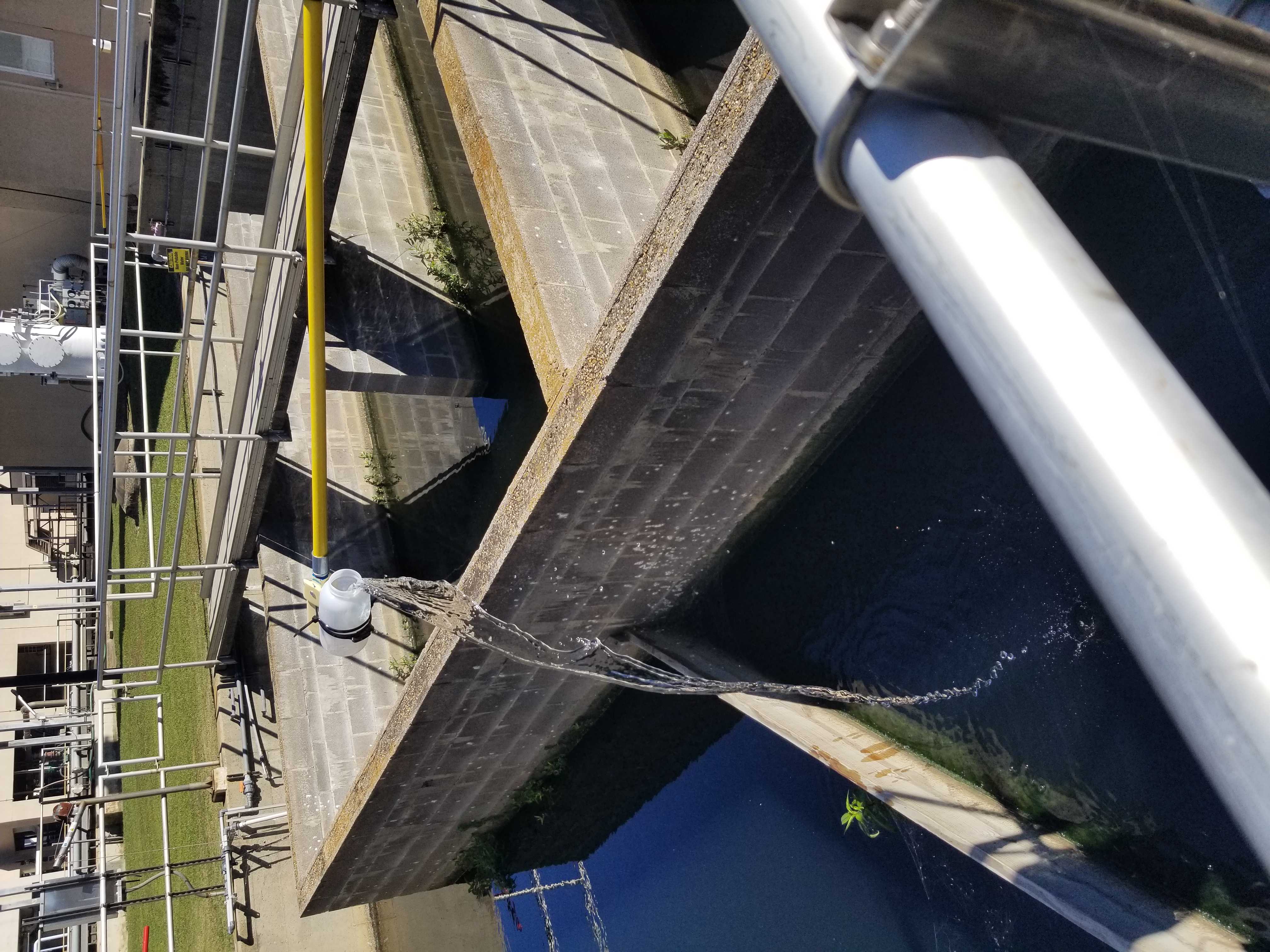Collection from Wastewater Treatment Plant, Transportation, and Storage of Raw Wastewater
Kevin Calci, Kevin Calci
Disclaimer
DISCLAIMER – FOR INFORMATIONAL PURPOSES ONLY; USE AT YOUR OWN RISK
The protocol content here is for informational purposes only and does not constitute legal, medical, clinical, or safety advice, or otherwise; content added to protocols.io is not peer reviewed and may not have undergone a formal approval of any kind. Information presented in this protocol should not substitute for independent professional judgment, advice, diagnosis, or treatment. Any action you take or refrain from taking using or relying upon the information presented here is strictly at your own risk. You agree that neither the Company nor any of the authors, contributors, administrators, or anyone else associated with protocols.io, can be held responsible for your use of the information contained in or linked to this protocol or any of our Sites/Apps and Services.
Abstract
This method was developed at the FDA’s Center for Food Safety and Applied Nutrition for GenomeTrakr’s pandemic response project, monitoring SARS-CoV-2 variants in wastewater. Protocols developed for this project cover wastewater collection, concentration, RNA extraction, RT-qPCR detection, library prep, genome sequencing, quality control checks, and data submission to NCBI. This method describes the collection and transport of raw wastewater samples from a wastewater treatment plant.
Before start
Prior to initiating routine collections from a wastewater treatment plant (WWTP), an appropriate sampling location should be identified. Key factors in selection of a sampling location include:
- Readily accessible location for collection of raw influent. Most WWTP have access immediately after bar or rotary screeners.
- Flow and mixing to ensure collection of a representative sample. Sampling from the center channel at 2/3 depth where it is generally most turbulent is recommended. Avoid sampling from edges, corners, and deadheaded channels.
- Ability to access the same location each sampling occasion without impeding normal WWTP operations.
Steps
Grab Sample Collection
When possible, new sample containers should be used. If not feasible, sample containers should be clean and autoclave sterilized prior to collection.
Ensure sample container(s) are labeled with indelible marker or waterproof labeling.
Grab samples can be collected using a peristaltic pump (section 3.1) or a dip pole (section 3.2). Ensure sample is collected from a consistent location with adequate mixing to be representative of the wastewater.
When using a peristaltic pump, place end of suction line into appropriate collection area (as described above in "before start" section).
- Start pump.
- Purge collection tubing by directing the tubing outlet to flow into the influent waste stream until approximately a litter flushes the tubing.
- Shut pump off.
- Move collection tubing outlet to the sample container and turn on pump to deliver intended sample volume.
- Shut pump off and cap the bottle tightly.
- Run pump in reverse direction to empty the collection tubing, paying close attention to facilitate all the influent making its way out of the tubing.
When using a dip pole, ensure the collection bottle on the pole is clean and securely fastened to the pole.
- Dip the collection bottle into the appropriate collection area (as described above in "before start" section) to rinse at least three times with the influent waste stream.
- Collect sample.
- Transfer the collected wastewater into the sample container.
Note
Do not collect sample directly in sample container. 
Composite Sample Collection
When possible, new sample containers should be used. If not feasible, sample containers should be clean and autoclave sterilized prior to collection.
Ensure sample container(s) are labeled with indelible marker or waterproof labeling.
Ensure suction line of the ISCO is placed downstream in the headworks, preferably after screener and de-gritting. Generally, the weighted suction strainer should but placed in an area of high hydrological turbulence and not touching the bottom or sides of influent channel (as described above in "before start" section).
Follow manufacturer's instructions to calibrate the collection volume of the ISCO to ensure adequate headspace (3-4 cm) will exist in the sample bottle(s) to allow for complete mixing prior to analysis in the laboratory.
Fill base of ISCO with ice and secure collection bottles in proper orientation. Add ice to remaining space around the collection bottles to ensure sample(s) remain cool from collection to transport, as necessary. If available, include temperature recording devices (Smart Buttons) to monitor sample temperature.

Composite samples can be collected as flow-paced or time-paced. Follow manufacturer's instructions for proper programming of the ISCO and then initiate collection.
After appropriate time, return to WWTP to collect filled sample bottles.
Sample Transportation
Ensure wastewater sample bottles are tightly sealed and decontaminate the surface with a bleach-based disinfectant (i.e., Hype-Wipes).
Place wastewater samples in secondary containment (polyethylene bag) and then place on wet ice in an insulated container (i.e., cooler). When possible, transport bottles in a rack to ensure they remain upright.
Ensure adequate ice is present to secure the bottles in the transport container and maintain sample temperature below 8°C for the duration of transportation.
Sample Storage
If samples cannot be processed immediately, samples should be stored at 2-8°C for up to 7 days.
If samples need to be stored longer than 7 days, frozen storage at -70°C or -20°C is recommended.


